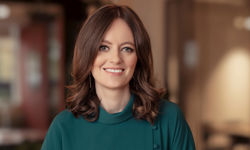In July, the B2B publisher whose brands cover sectors including insurance, banking, pensions and risk management, was named Digital Publisher of the Year at the 2016 AOP awards, after its six-figure investment in audience research and digital development led to a 20% year on year increase in digital revenues.
The AOP judges sang the company’s praises, saying: “Incisive Media isn’t just a market leader; it’s an industry leader.”
How did the publisher achieve this impressive result?
By Incisive’s own admission, when the company embarked on an ambitious overhaul of its websites in January 2015, it was seven years since the sites had last been revamped and they were now “cluttered, slow, hard to develop and offered restricted commercial opportunities”.
By January 2016, the company had transformed its digital offering, relaunched eight major sites ensuring consistency between desktop and mobile devices, and significantly improved both the user experience and ad viewability.
The key to this transformation was responding to extensive audience research which revealed that users found the sites slow to load and difficult to navigate. Advertisers were concerned that the position of their ads on the page meant they were not well viewed, and the publisher was struggling to cater to the increasing demand for sponsored content.
Understanding the user
Incisive’s head of user experience Mark Goddard explains: “At the start of 2015, our CEO Tim Weller suggested we do product reviews of all our main titles and brands to get an understanding from a user perspective of what their needs were. At that time, we had just finished a project improving the experience of our mobile websites. One of our key objectives was to align the mobile and desk top experience.”
The research budget accounted for a large portion of Incisive’s substantial investment in improving its digital offering. The technical side of the redevelopment was made more cost effective by using the same coding across all twenty of the publisher’s sites.
A four-month research project was carried out in conjunction with OC&C Strategy Consultants to fully understand the audience by conducting one to one interviews, qualitative surveys, screen tracking and focus groups. Because many of Incisive’s business users are time-poor individuals, they also made extensive use of quantitative research, matching Google Analytics data with their articles database.
As a result, the company was able to gather detailed information about readers’ habits, likes and dislikes and to respond accordingly by decluttering the pages and using ‘mega menus’ to make them more easily navigable.
Goddard reveals: “We used to split up tech pieces on multiple pages, but that led to quite an annoying user experience. Lots of users were printing articles off because they found it hard to read on their desk top, or to physically share.”
In response, the company increased the font size and asked editorial staff to keep whole articles on one page to make them easier to read. They also introduced a save article function to allow readers to clip articles to read later or share with colleagues.
From an advertiser’s perspective, the company has minimised the number of ad templates on a page, but made sure the remaining adverts are higher up the page and stay visible for longer. Before the redesign, viewability (the number of ad impressions actually seen by the reader) on the Insurance Age website was 55-60%. Now viewability is consistently over 75% - an increase of about 30%. It has also introduced new templates to make it easier to publish sponsored content, while ensuring this is clearly flagged to readers.
Usage patterns
The research also revealed how readers access the same information at different times of day through different devices. Chief digital officer John Barnes explains: “A lot of our sites are very much centred around the nine to six business day. Traffic climbs steeply on the morning commute. It climbs up again at lunchtime and slowly builds through the afternoon to the evening commute, then drops off at 8pm.” However, he adds: “Whilst overall traffic might drop down after 8pm, tablet use is 60-70% of that, whereas at 3pm it is 60-70% desktop. We believe it is happening because people are clipping articles when they are busy. Their on-page time might be quite low, but then they are going back and reading it later. Our readers are time-poor during the day, but time-rich in the evening.”
Another of the improvements the company has made is to ensure there is now consistency between mobile and desktop interfaces so that when users are going through this process of clipping articles to read later, they will now see more in common than there would have been two years ago.
Incisive identified two kinds of users: senior users and junior users. Barnes expands on this: “Senior users are not always older; they may be 30-somethings running a trading desk." Because these senior users are time-poor and not very pro-active, they have to be encouraged to read content using email notifications. Junior users are often doing the legwork. They are proactive users of the site and so do not need to be pushed to read articles. “They respond less well to email alerts because they have already read the articles on site,” says Barnes.
Measuring engagement
The company has set up its own engagement index to measure how well users are interacting with its sites. Barnes argues: “A lot of engagement measurement tools are based purely on somebody being on a page. That doesn’t necessarily do the job for a business like ours. You could have someone coming into risk.net from Google. They might spend quite a bit of time on pages trying to work out what they are looking for. When they leave, you have got a number which on the face of it is quite good. If you have got an email subscriber who has come in and clipped an article to read later they might have been on one page for a short time. On the face of it, the first user looks more engaged, but because the second user is a subscriber and because they have clipped an article to read later, that is an indicator of a larger amount of engagement. If you think about food shopping, if you just looked at the supermarket shop, you would be missing how they cooked the meal and where they got the recipe from.”
Monetisation segments
Unlike many publishers who divide their titles by sector, Incisive has found it more useful to realign its offering around how sites are monetised; whether they are free to air and therefore advertising-led, or subscription-led. Taking this approach, it has devised different rules towards advertising for different brands, such as how long you wait before inserting adverts into an article on a mobile device. Goddard explains: “With Investment Week for example, readers don’t have to register to access content and it is primarily ad-funded, so we might let ads in after a shorter number of paragraphs. With risk.net and Waters, the end users pay up to £2,000 for a subscription, so we have to prioritise the reader experience.”
This does not mean no adverts, just fewer ads on the page, although Barnes admits the introduction of ad-free sites is something they are constantly debating: “Obviously advertising helps to keep subscription prices lower. The question would be, at some point would we have a price for a site without advertising?”
The publisher has been praised for its innovative approach to ad blocking. Barnes concedes: “Like most publishers, we are mildly irritated by the fact that some of our sites are free to air, users like them and then they want to block ads. That doesn’t seem to be very equitable if content is free.”
But he admits: “Many of the issues came from the fact that far too many publishers have abused users’ trust by firing ads in their faces. It is inevitable that some users are going to say, we want the content but we don’t want the ads.”
He concludes: “We would support education over penalisation. We would highlight the fact they clearly like the site, the site is free to air, we’ve got journalists to be paid, we would ask they turn off their ad blocker or put our site on a white list.”
Like the Financial Times and The Economist, Incisive titles are now moving towards advertising rates based on the time an ad has been in front of a user rather than on page impressions. “It’s like a whole page in a broadsheet versus a quarter page ad, or a TV ad of 30 seconds versus 10 seconds. We think particularly in B2B, having a business model based on impressions is really flawed,” argues Barnes.
What next?
The next steps for the company are to improve the back end of its digital platforms by moving to an open source platform with Drupal, and to update its events and awards sites to the same standard as the editorial sites.
Goddard hopes they will not be looking at another major redesign several years down the line: “We want to be continuously developing sites based on feedback from readers.”
For Barnes, the key issue is whether corporate users choose to renew their subscriptions when they come to an end: “When subscriptions get renewed, somebody is going to say to their users, it costs a lot of money, is it worth having? It may be they love an email alert, or the tablet edition, some people might only read two or three articles a month and think that is important. We want them to say ‘yes’.”












